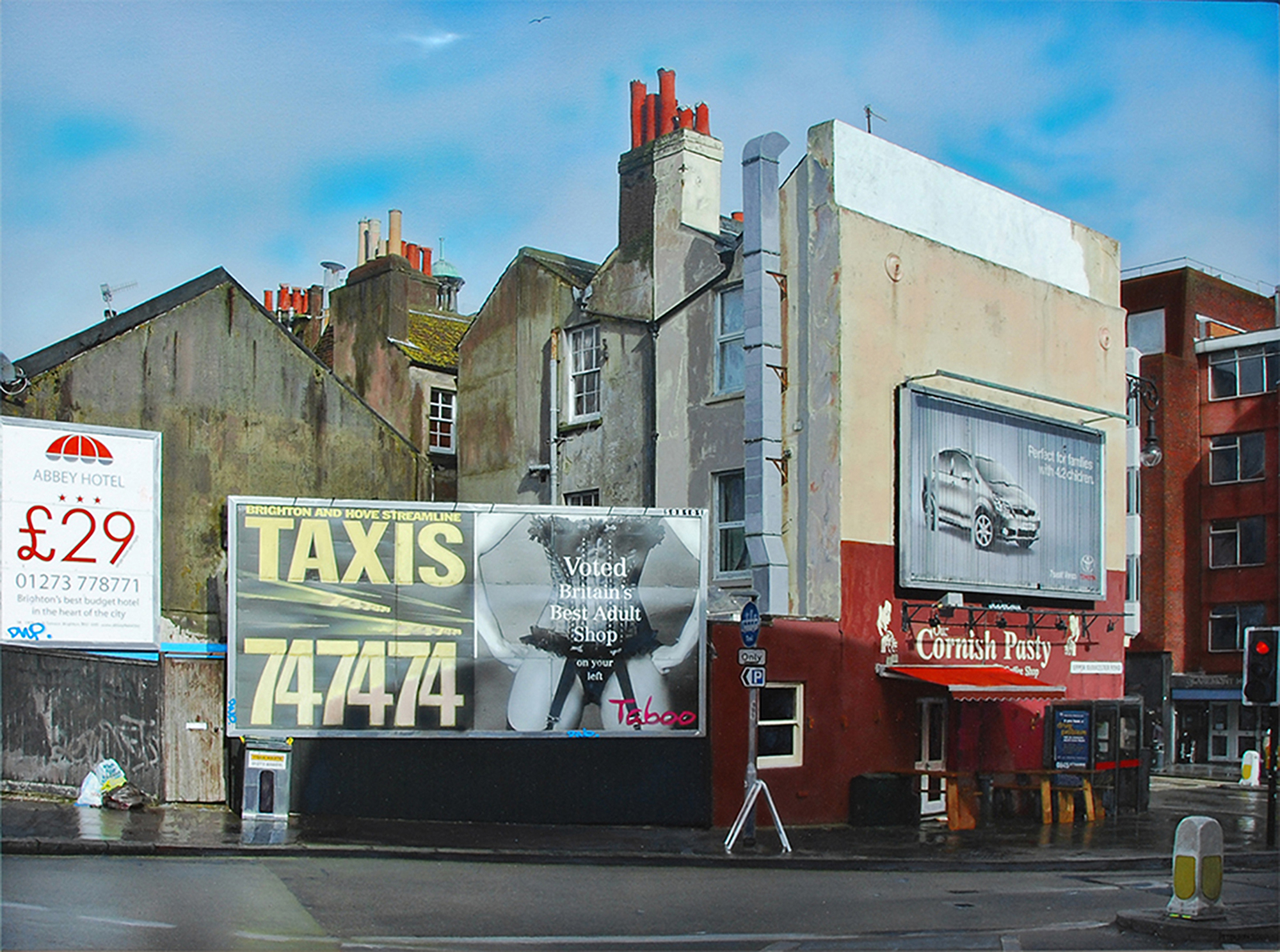
By no small difference...?
Simply put, hyperrealism is a significant deviation from photorealism, not a mere replication of the original image in any sense. That would be best left to the school of photorealism. Back in the 1970's when photorealism was hitting its stride, many known NY painters met weekly downtown and argued vehemently as to methods and practices: projectors, airbrushes, photo-silkscreening, photographic emulsions, etc.
The whole point was to create an exacting painting as a convincing replication of reality. Hyperrealism, on the other hand, redirects images of alternate visual illusions that, at times, can depict rather complex societal and cultural anomalies (hyperrealities). The saturation of these simulacra as perceived realities in a painting effectively differentiates hyperrealism from photorealism.
So, is it fair to call you the father or the pioneer of hyperrealism?
When I coined the term hyperrealism for my new work, I openly espoused its distinctive differences with photorealism in various writings, talks, discussions at universities, galleries and with other photorealist painters. Correspondingly, new streams of thought were created, as they should in any new school of art. All changes are good, and a lot of artists were really taking off with it. Pioneering new schools of art is a short-lived honor. If it is done right, other artists will immediately adapt to the genre (and have worldwide).
Actually, "Hyperréalisme" made a brief appearance as a superfluous exhibition title during a 1973 Photorealist show in France, followed by decades of photorealism. That said, nuances of style and motifs make for a self-perpetuating continuity that is destined to neither be owned nor constrained by any one artist. Unfortunately however, the term hyperrealism is now commonly misappropriated as a broad hyperbole in multifarious and derivative styles of art that are either diluted, diverted or dialectic... I guess "die" is the operative utterance here!
Would you say then that photorealism and hyperrealism are distinctly different or one and the same?
They are the same only so far as the obvious. Both utilize, no, depend upon photography. And both see Pop as ingredient to successful social statements. But the similarity ends almost before it begins. Where photorealism tended to utilize subtle abstractions and careful simulations of photography, hyperrealism relies upon substituted optics to accentuate the appearance of agonistic simulations embedded within immutable social and cultural transformations.
How does that relate to The Wall series then?
In a big way. The Wall series paintings are based on an artificial (hyperreal) illusion of bourgeois city life virtually juxtaposed with an alternate reality: the commodification of poverty. It is the quintessential simulacrum - human suffering misperceived as simulation of alienation caught in a crumbling reality of disuse.
I knew that aside from the stories that I needed to tell; the subjects needed to tell their stories as well. This required spending time on the street with the subjects... In a similar fashion, Philip Guston aspired "to paint things as if one had never seen them before, as if one had come from another planet...to paint as a caveman would." New York's a big city for a caveman with a camera! And let's face it, does the art world need more paintings of neon signs or bowls of cherries?
So then you really are a social realist?
In the context that there are cultural anomalies driving our society, yes. And since we are basically a Pop culture, I find these worthwhile painting. As a realist painter, the work, the piece, its compositional balance, tonal perspective and the like all rise to the top as priorities. As do the innumerous social injustices of our time. Deeper social commentary and the like can be left to the writers, the art critics, the commentators who can always express that stuff much more succinctly than can I.
Deeper social commentary and the like can be left to the writers, the art critics, the commentators who can always express that stuff much more succinctly than can I. But there is definitely room for including some humanity in art work, as it has increasingly been devoid of that.
But there is definitely room for including some humanity in art work, as it has increasingly been devoid of that. Take the recent exhibit downtown of those victims from China whose bodies were dissected, plasticized for the "benefit of society" and rationalized as "art". Certainly disingenuous and morally rancid stuff thought up for one thing only, not for art, not for science, just for profit.
Absolutely disgusting really...those poor people were prisoners and did not give permission to be displayed in obscenely idiotic poses after their untimely deaths - in fact, some were likely murdered in order to be sold for profit by soulless entrepreneurial businesses .... and those who attend these so-called art exhibits are the same classless morons who pass by the homeless and wonder why their uptown neighborhoods cannot be policed more assiduously.
Your concerns certainly come through your work.
I hope so, there are many younger artists who write me concerning how deeply their own thinking, their art has developed as a result.... and that is really gratifying to hear.
Outside of exhibiting your work in galleries and museums, how do you get your message out?
My website attracts millions of views each year with blogs from around the globe written about the scope of the work and its evident social meaning. The great thing about this is the apparent presence of an elevated consciousness among so many diverse cultures and societies.
And all through paintings, imagine that! (return to 1)